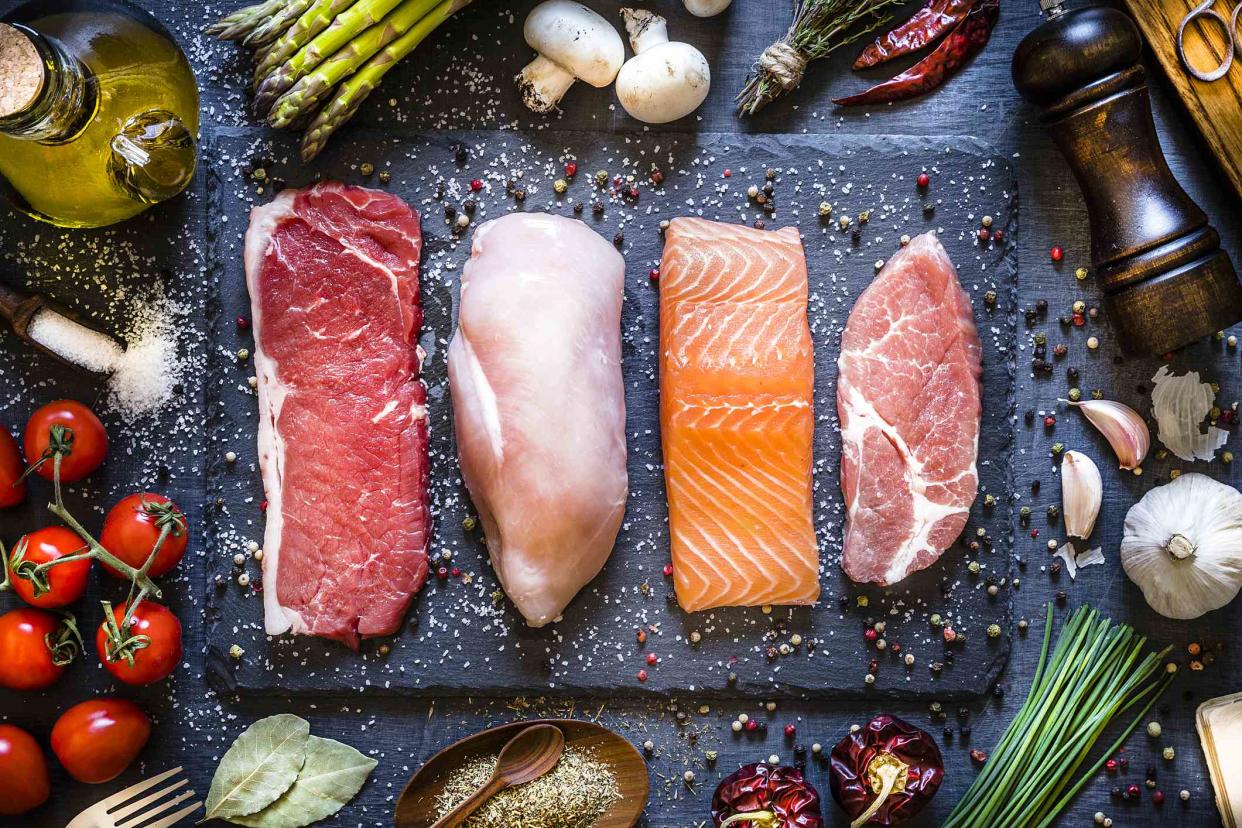What Are Amino Acids?

carlosgaw / Getty Images
Amino acids are the building blocks of protein. Proteins are made up of chains of amino acids. When you eat a protein-rich food, like lentils or Greek yogurt, your body digests or breaks up the protein into smaller pieces called amino acids.
Amino acids are absorbed from your digestive tract into your bloodstream. Every cell in your body contains protein. Therefore, proteins, and the amino acids they’re made from, are needed to make or repair protein tissues, which include muscles, bones, cartilage, skin, and blood.
Where Do Amino Acids Come From?
Amino acids come from food, including plant-based foods, like beans and nuts, and animal-based foods, like eggs and fish. Some foods provide more total protein (and therefore more amino acids) than others per serving. In addition, the specific amino acid makeup of foods varies, but amino acids are found in every food group you eat.
Related:What Happens When You Don’t Eat Enough Protein?
How Many Amino Acids Are There?
Plant and animal proteins are made up of about 20 common amino acids. The amount of each amino acids varies with a given food, but with the exception of gelatin (which is completely missing a few specific amino acids), all foods contain some of each of the 20.
It’s a common belief that most plant foods are missing certain amino acids. The truth is that all plant foods contain all 20 amino acids, but the amounts of some amino acids are simply low in certain plant foods, not absent.
If you eat a more plant-based diet you don’t need to worry about a strategy called combining, which involves pairing a plant food that’s low in one amino acid with another that’s high, like eating beans and beans rice together.
If a wide variety of plant foods are consumed overall, all of the amino acids can be obtained in adequate amounts, even on a fully plant-based diet.
Essential Amino Acids
Of the 20 amino acids, nine are essential, which means they must be consumed from foods to stay healthy. The nine are:
Phenylalanine
Valine
Tryptophan
Threonine
Isoleucine
Methionine
Histidine
Leucine
These are often referred to as indispensable amino acids because your body cannot survive without them.
Nonessential Amino Acids
Nonessential amino acids, also known as dispensable, do not need to be consumed from food. That’s because your body can make these amino acids using only the nine essential amino acids. Nonessential amino acids include:
Alanine
Arginine
Asparagine
Aspartic acid
Cysteine
Glutamic acid
Glutamine
Glycine
Proline
Serine
Tyrosine
Conditionally Essential Amino Acids
Certain amino acids are known as conditionally essential depending on an individual’s circumstances. For example, a healthy adult may be able to make the non-essential amino acid tyrosine from phenylalanine, an essential amino acid. But a young child may not have developed the enzyme needed to do so, which would make tyrosine an essential amino acid for that individual. Certain disease states can also cause an amino acid to become conditionally essential.
There are seven nonessential amino acids that sometimes become conditionally essential. These are:
Arginine
Cysteine
Glutamine
Glycine
Proline
Serine
Tyrosine
How Many Amino Acids Do You Need?
To cover your amino acid needs it’s best to consume a variety of foods, which will supply a wide array of amino acids. You do not need to consume animal-based foods in order to meet all of your amino acid needs, including the nine essential amino acids.
Whether you’re vegan, vegetarian, pescatarian (meaning seafood is the only animal food you eat) or omnivore (meaning you eat plants and animals), it’s best to eat a variety of foods in order to consume an adequate amount and variety of amino acids. A varied diet also helps you take in a broad range of other nutrients, like vitamins, minerals, and fiber.
Amino acids are found in vegetables and fruits, whole grains, nuts, and seeds. If you eat animal-based foods you’ll obtain amino acids from eggs, dairy, seafood, poultry, and meat. Other plant foods that supply amino acids include beans, lentils, peas, and soy products, like tofu and tempeh.
Related:19 Best Vegetarian and Vegan Protein Sources
A Quick Review
Amino acids are the structures that make up proteins, just as individual bricks come together to make a brick wall. Nine essential amino acids need to be consumed from food in order to build and repair protein tissues in your body.
The best way to meet your amino acid needs, including the nine essentials, is to eat enough calories for your body (based on factors including your age, height, weight, and activity level) and consume a varied, balanced diet that provides enough protein.
If you have specific questions about how to meet your protein or amino acid needs, talk with your healthcare provider.
For more Health news, make sure to sign up for our newsletter!
Read the original article on Health.
